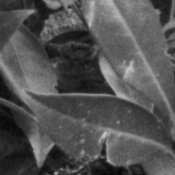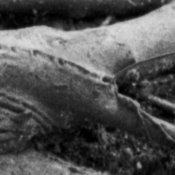j_landecker
Member
I thought I'd share the results of my first try with extreme minimal agitation, as I was quite surprised with the outcome. I wasn't planning to do any sort of comparison at all - I just wanted to give one of the variations of semi-stand development a try, inspired by recent threads including Sandy King's guidelines in (there was a url link here which no longer exists) thread. It turned that the exposed negative I had was a duplicate of one I had developed in the Jobo a couple of weeks ago, so I couldn't resist a comparison.
The negatives were shot on 4x5 Arista EDU 200 (= J&C Classic 200 = Forte 200) at the end of the day, with an exposure of 6 sec. @ f22. Both were developed in Pyrocat HD @20 deg C, the Jobo negative for 8 minutes at a dilution of 1:1:100, and the EMA negative for 40 minutes at a dilution of 1.5:1:200, with 1.5 mins initial agitation, and then 10 seconds at the 10-, 20- and 30-minute marks. The EMA negative is overall denser looking than the Jobo one, but the amount of shadow detail is dramatically elevated in the compared to the Jobo negative (this is a simple visual comparison on the light table).
I cropped out small portions of the scans, which were done on an Epson 4990 @ 4800 dpi, inverted the raw 16-bit scans and adjusted the contrasts of the crops to match roughly, as I wanted to compare them as if I made 2 prints of equal contrast. The crops are unsharpened. The attached overall view is of an area about 1 1/8" high on the negative.
What I found was that the difference between the two in terms of detail and sharpness is subtle given the high magnification of the crops (if your monitor is 100 dpi, these will be about 48x magnification). The biggest surprise is that the EMA negative doesn't seem to show any of the edge effects which are supposed to result from minimal agitation. Why is that? Is it the subject contrast, developer or film? Is semi-stand development (no intermittent agitation) necessary to get edge effects? I thought I might see bigger differences in "micro-contrast" as mentioned in other threads.
I've simply labelled the crops from the 2 developing methods A and B, so see if you can guess which is which...
I know this comparison is very unscientific and will be poked full of holes, but I look forward to your comments regardless.
Jim
The negatives were shot on 4x5 Arista EDU 200 (= J&C Classic 200 = Forte 200) at the end of the day, with an exposure of 6 sec. @ f22. Both were developed in Pyrocat HD @20 deg C, the Jobo negative for 8 minutes at a dilution of 1:1:100, and the EMA negative for 40 minutes at a dilution of 1.5:1:200, with 1.5 mins initial agitation, and then 10 seconds at the 10-, 20- and 30-minute marks. The EMA negative is overall denser looking than the Jobo one, but the amount of shadow detail is dramatically elevated in the compared to the Jobo negative (this is a simple visual comparison on the light table).
I cropped out small portions of the scans, which were done on an Epson 4990 @ 4800 dpi, inverted the raw 16-bit scans and adjusted the contrasts of the crops to match roughly, as I wanted to compare them as if I made 2 prints of equal contrast. The crops are unsharpened. The attached overall view is of an area about 1 1/8" high on the negative.
What I found was that the difference between the two in terms of detail and sharpness is subtle given the high magnification of the crops (if your monitor is 100 dpi, these will be about 48x magnification). The biggest surprise is that the EMA negative doesn't seem to show any of the edge effects which are supposed to result from minimal agitation. Why is that? Is it the subject contrast, developer or film? Is semi-stand development (no intermittent agitation) necessary to get edge effects? I thought I might see bigger differences in "micro-contrast" as mentioned in other threads.
I've simply labelled the crops from the 2 developing methods A and B, so see if you can guess which is which...

I know this comparison is very unscientific and will be poked full of holes, but I look forward to your comments regardless.
Jim















